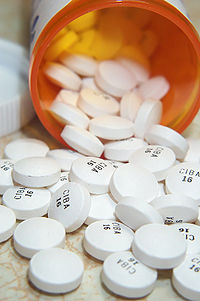
Photo from wikipedia
Adolescence marks a period of significant neural maturation and development of lifelong habits, including the potential use of recreational psychostimulant drugs. Increased prevalence of drug adulteration and fatalities related to… Click to show full abstract
Adolescence marks a period of significant neural maturation and development of lifelong habits, including the potential use of recreational psychostimulant drugs. Increased prevalence of drug adulteration and fatalities related to drug overdose pose new challenges for individuals who use drugs recreationally. As the prevalence of recreational psychostimulant use drastically increases during young adulthood, pediatric and adolescent health care providers can play a crucial role in the lifelong well-being of their patients by identifying those with risk factors for consequences associated with substance use at an early age. This article discusses the epidemiology, pharmacology, clinical manifestations, complications, and common methods of use for three types of psychostimulant drugs-amphetamines, methamphetamine, and 3,4-Methylenedioxymethamphetamine. This article aims to provide pediatric and adolescent health care providers with practical knowledge to effectively perform substance use screening, brief intervention, and referral to treatment with the goal of reducing drug-related morbidity and mortality among the adolescent age group. [Pediatr Ann. 2023;52(5):170-e177.].
Journal Title: Pediatric annals
Year Published: 2023
Link to full text (if available)
Share on Social Media: Sign Up to like & get
recommendations!